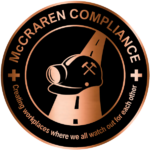
Ann Arbor, MI — Around 3 out of 4 workers have kept quiet when they’ve had an illness that could infect their co-workers, according to a recent study.
Researchers at the University of Michigan analyzed data from 10 studies involving more than 4,100 U.S adults, who included health care workers and other online crowdsourced workers.
Findings show that about 75% of participants have concealed an illness during interpersonal interactions. Of the health care workers, 61% didn’t speak about an illness, took active steps to hide it, incorrectly used a mandatory app-based health screening tool at least once and/or intended to conceal future illnesses.
The motivation, according to the researchers, is that people with an infectious illness are often socially excluded. They’re also focused on achievement-oriented goals, such as completing work projects and objectives. Few of the participants said workplace policies, such as a lack of paid time off, were a factor.
The researchers say workers’ dishonesty about being infectious can have negative consequences on public health.
“Sick people and healthy people evaluate the consequences of concealment in different ways,” lead study author Wilson Merrell, a doctoral student at U-M, added in a press release, “with sick people being relatively insensitive to how spreadable and severe their illness may be to others.”
The study was published online in the journal Psychological Science.
McCraren Compliance offers a full range of safety and health training and consulting services. Plus we can help you incorporate well-being into your traditional systems in order to support the Total Worker Health of your workforce.
Call 888-758-4757, email info@mccrarencompliance.com or visit our website www.mccrarencompliance.com
Original article published by Safety+Health an NSC publication


